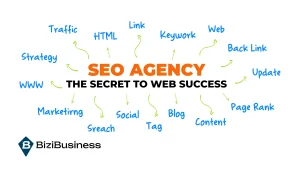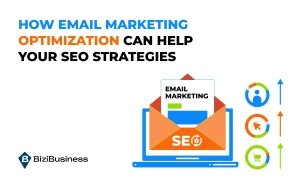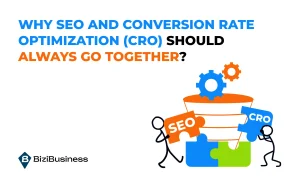BiziTopics
What is Crawling In SEO? How Does it Impact Rankings?
BiziBusiness
Oct 24, 2024
6 min read
In SEO, crawling is a fundamental step to enhancing a website’s ranking and visibility. Then what is crawling in SEO, you may ask? It refers to the process by which search engines scan and index new or updated webpages, determining their relevance and positioning in search results when users search for relevant keywords.
Understanding how crawling works is essential for developing effective SEO strategies, as it directly influences how content is discovered and ranked by search engines. This knowledge is pivotal for optimizing a website to ensure it meets the criteria for efficient crawling, thus improving its overall search performance.
Want to know more? Let’s get started!
What is Crawling in SEO?
Crawling in SEO is a critical process where search engine bots scan websites, analyzing and indexing their pages. This allows search engines to gather and store information, making it accessible to users through search queries.

The role of these bots, often referred to as ‘spiders’ or ‘crawlers’, is to navigate the web, visiting sites to understand their content and structure. These bots prioritize new sites, updates, and links, determining the relevance and authority of the pages.
What can these bots crawl on your website? Various types of content, including text, images, and videos, but it’s the site’s structure and metadata that often dictate the efficiency of this process.
How Website Crawl Can Impact on Rankings
Understanding what is Crawling in SEO and how it is a process which search engines dispatch bots to gather information from webpages is a fundamental step before indexing can occur.
This procedure directly influences how content is indexed, determining its visibility on the web. The more efficiently a site is crawled, the quicker and more accurately its pages are indexed, enhancing its visibility to potential visitors.
Search engines utilize the data collected during crawling to assess the relevance and quality of content, which in turn influences a website’s ranking in search results.

Websites that are easily navigable by crawlers are more likely to have their content promptly indexed and ranked higher.
This tells the significance of optimizing a website’s structure and content to accommodate these bots, ensuring they can access, understand, and index the site effectively.
Thus, the impact of crawling directly affects a website’s visibility and its position in search engine rankings. For SEO strategists and website owners, prioritizing the facilitation of this process through technical SEO practices is key to securing top positions in search results and attracting more traffic to their site.
Factors Affecting Crawling
Understanding “What is Crawling in SEO” is pivotal for any SEO strategy, as it directly influences a website’s visibility and ranking. To ensure this process happens effectively, several key factors determine the efficiency and effectiveness of this process includes:

Website structure and navigation
A website’s structure and ease of navigation are paramount in facilitating effective crawling. Search engines’ bots, such as Google’s spiders, navigate through links to discover content.
A well-organized site with a logical hierarchy and clear navigation aids these bots in indexing the site more thoroughly and efficiently. On the other hand, sites with complex or deep structures may hinder the crawling process, potentially leaving some important pages unindexed.
Quality of content and metadata
The quality of content and the accuracy of metadata play significant roles in the crawling process. High-quality, original content that is relevant to user queries is more likely to be indexed and ranked favorably.
Additionally, metadata, including titles, descriptions, and tags, provides search engines with concise information about the content of a page, facilitating more effective indexing. Engaging and pertinent content, coupled with accurate metadata, significantly enhances a site’s crawlability.
Technical SEO considerations
Technical SEO elements are crucial for optimizing a website for crawling and indexing. This includes the use of robots.txt files to guide crawlers on which parts of the site to index or ignore, the implementation of sitemaps to list all pages for crawling, and ensuring the website is free of crawl errors, such as broken links or duplicate content.
Moreover, website speed and mobile responsiveness impact how effectively search engine bots can crawl a site, with faster, mobile-optimized sites being favored.
Strategies for Optimizing Crawling
In the digital age, the visibility of your website on search engines can significantly impact your business’s success. A fundamental aspect to enhance this visibility involves understanding “what is crawl in SEO” and implementing strategies to optimize this process.

Additionally, considering whether to hire an SEO company for expertise and guidance can be a pivotal decision in navigating the complexities of SEO and ensuring your site is optimally crawlable by search engine bots.
Creating crawlable websites
The foundation of optimizing crawling starts with creating a website that is easily navigable by search engines. This involves designing a clear, logical site structure with well-organized content and an intuitive navigation system.
Ensuring that your website’s pages are linked in a way that search engines can easily follow is crucial for comprehensive indexing. Utilizing breadcrumb lists and a consistent internal linking strategy can significantly enhance a site’s crawlability.
Utilizing XML sitemaps and robots.txt
XML sitemaps are vital tools in guiding search engines through your website, indicating which pages are important and how often they are updated. Submitting an XML sitemap to search engines can help ensure that all desired pages are discovered and considered for indexing.
Conversely, a robots.txt file is used to tell search engines which parts of your site to exclude from crawling.
Properly configuring your robots.txt file can prevent search engines from wasting crawl budget on irrelevant or duplicate pages, thereby optimizing the crawling of valuable content.
Monitoring and improving crawl budget
Crawl budget refers to the number of pages a search engine will crawl on your site within a certain timeframe. Maximizing the efficiency of this budget is essential for large websites or those with extensive content.
Monitoring server log files can provide insights into how search engines are interacting with your site and identify any issues, such as frequent crawling of low-value pages or errors that could be depleting your crawl budget.
Implementing strategies such as prioritizing high-value pages, fixing broken links, and improving site speed can help optimize your crawl budget.
Hiring an SEO agency can offer the expertise to monitor these metrics effectively and recommend adjustments to improve overall SEO performance.
Strategies for Optimizing Crawling
As we look toward the future, the question of “what is crawling in SEO” will continue to evolve in complexity and importance. The role of crawling in SEO is set to become even more significant, with search engines constantly refining their algorithms to better understand and index web content. Predictions for future algorithm changes suggest a greater emphasis on user experience, mobile-first indexing, and the semantic web.

Adapting to these trends will require innovative solutions and strategies. Implementing BiziBusiness‘s cutting-edge solutions can position your website at the forefront of these developments, ensuring enhanced SEO performance and superior visibility in an ever-changing digital landscape.
Contact us now for a free consultation!
Subscribe to Newsletter
Unlock your creativity and stay up to date on marketing tips





